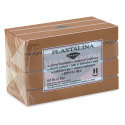Is Ceramic Oven Safe
Ceramic is a versatile and popular material for many household items, including cookware. But can ceramic go in the oven? The short answer is yes, but there are a few things to keep in mind.
Here’s what you need to know about using ceramic bakeware in the oven.
If you’re looking for an oven-safe option for cooking, ceramic may be the way to go. Ceramic is a durable material that can withstand high temperatures, making it ideal for cooking and baking. Plus, it’s easy to clean and comes in a variety of colors and styles to suit your kitchen.
4 Types of Toxic Cookware to Avoid and 4 Safe Alternatives
Can You Put Ceramic in the Oven?
Yes, you can put ceramic in the oven. Ceramic is a type of material that can withstand high temperatures, making it ideal for baking and cooking. However, it’s important to note that not all ceramics are created equal.
Some are designed specifically for the oven, while others may not be as heat-resistant and could crack or break if exposed to too much heat. When in doubt, always check the manufacturer’s instructions to see what temperature range your particular piece of ceramic is rated for.
How Do You Know If It’S Oven Safe?
If you’re not sure if a dish is oven safe, there are a few things you can do to check. The first is to look for any manufacturer’s markings on the bottom of the dish. Many times, manufacturers will put a symbol on the bottom of the dish to indicate that it is oven safe.
If you don’t see any markings, you can also try heating the dish in the oven for a short period of time (about 15 minutes) and then feeling the outside of the dish. If it feels hot, then it’s probably not oven safe. Finally, you can also try putting some water in the dish and then putting it in the freezer for a few hours.
If the water freezes solid, then the dish is likely oven safe.
What Temperature is Ceramic Safe To?
Ceramic is a very strong and durable material, but it is also quite fragile. Depending on the type of ceramic, it can be safe to use at temperatures as high as 3,000 degrees Fahrenheit. However, most ceramics are only safe up to about 1,200 degrees Fahrenheit.

Credit: madamngrecipe.com
Can Ceramic Go in the Microwave
If you’ve ever wondered whether ceramic can go in the microwave, you’re not alone. It’s a common question, and one that has a bit of a complicated answer.
Here’s the thing: pure ceramic can absolutely go in the microwave.
That’s because it doesn’t contain any metal, which is what causes sparks (and potential fires) in the microwave. However, many pieces of ceramic cookware – like plates, bowls, and mugs – are actually coated with a thin layer of metal. And that means they shouldn’t go in the microwave.
So how can you tell if your ceramic cookware is safe for the microwave? The best way is to check the bottom of the piece for a symbol called a “microwave-safe mark.” If you see this symbol, it means the piece has been tested and approved for use in the microwave.
If you don’t see this symbol, it’s best to play it safe and avoid microwaving your ceramic cookware.
Conclusion
Ceramic ovens are becoming increasingly popular in home kitchens, but many people are unsure about their safety. While ceramic is a very durable material, it can be prone to cracking if it is not properly cared for. However, when used correctly, ceramic ovens are perfectly safe and can provide years of trouble-free cooking.
Here are a few tips to help you use your ceramic oven safely:
– Always preheat the oven before cooking. This will help to prevent thermal shock, which can cause the ceramic to crack.
– Use an oven thermometer to ensure that the oven is not too hot or too cold. Ceramic can break down at extreme temperatures.
– Be careful when using sharp utensils on the ceramic surface.
Avoid scratching or chipping the surface by using wooden or silicone utensils instead of metal ones.
– Never place hot ceramic cookware directly on a cold surface. This can also cause thermal shock and lead to cracks.
Allow cookware to cool slightly before moving it to a different surface.






